Florida First Time Driver Course
If you’re a teen applying for your first Florida driver’s license, you’re required by the state to complete an authorized Florida first-time driver course called the TLSAE course. Our Florida drivers ed online course meets the state-mandated 4-hour time requirement, but we make it a snap to get through those 4 hours! It’s self-paced and your progress is automatically saved as you go, so you have complete control over how much you do at a time. Do the entire Florida driver education course in an afternoon, or spread it out over a few days.
Florida Driver Services Permit Exam Only
Have you already taken the TLSAE course and just need to take the permit test? If you are between the ages of 15 and 17, we offer the actual Florida-authorized permit test online so you can take it from home with ease and convenience. We’ll even report your results directly to official Florida driver services!
Florida Drug and Alcohol Course & Permit Test Combo
This combo package is the easiest way for drivers aged 14 1/2-17 to fulfill all of their Florida learner permit requirements.
First, you’ll take our self-paced online Florida drug and alcohol course and exam. Once you’ve completed the online Florida drivers education course, you can take the Florida permit exam at home. We’ll report your results to Florida driver services, so you’ll need to head to your local driver’s license office and pick up your permit. There’s no better way to get your Florida learners permit!
Online Florida Drivers Education from the Leader in Online Driving Schools
We know that passing your drug and alcohol test and getting your Florida learners permit is a big deal. It doesn’t have to be a big hassle. Our online Florida drivers permit courses are convenient and allow you to pass without having to rearrange your life drastically.
At I Drive Safely, we have been creating drivers education programs for students like you for over 20 years. Our Florida permit courses are of the highest quality and are fully authorized by the state of Florida. You can feel confident knowing you’re learning everything you need to know to join the ranks of Florida’s drivers.
Still have questions about how to get your Florida drivers permit? Check out our Florida Learner’s Permit guide! You can also find answers to FAQs and contact us 7 days a week via our Help Center.








